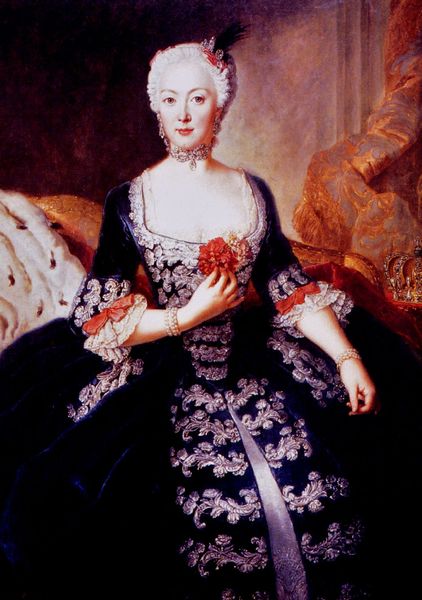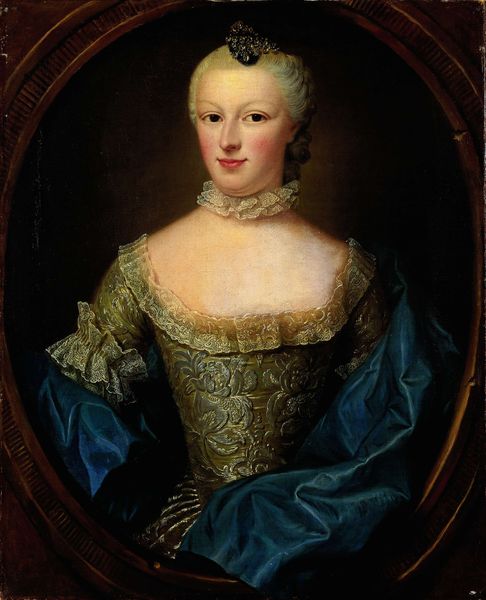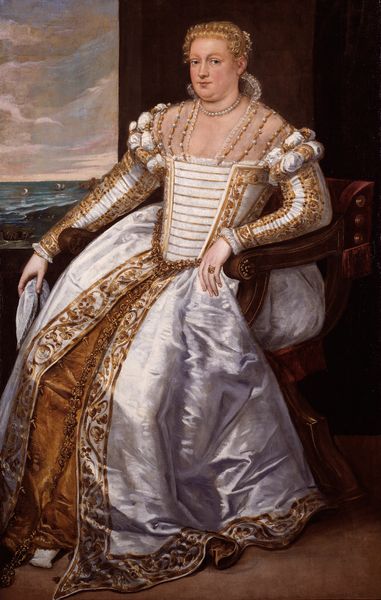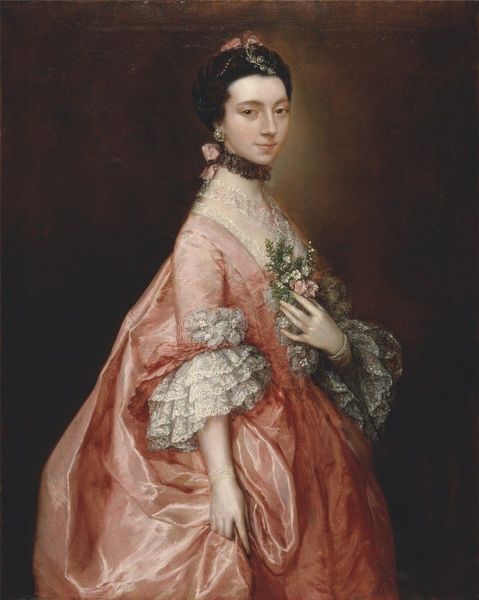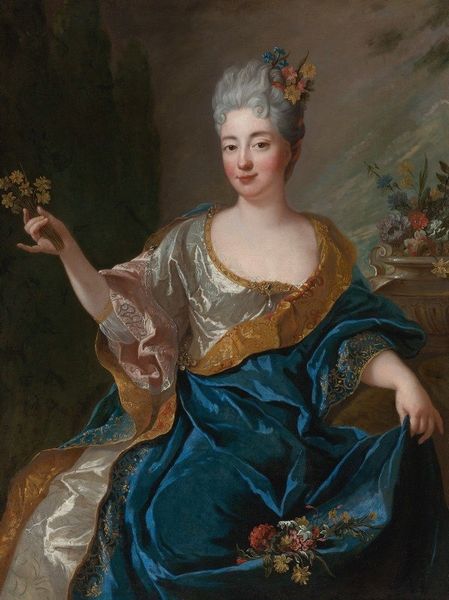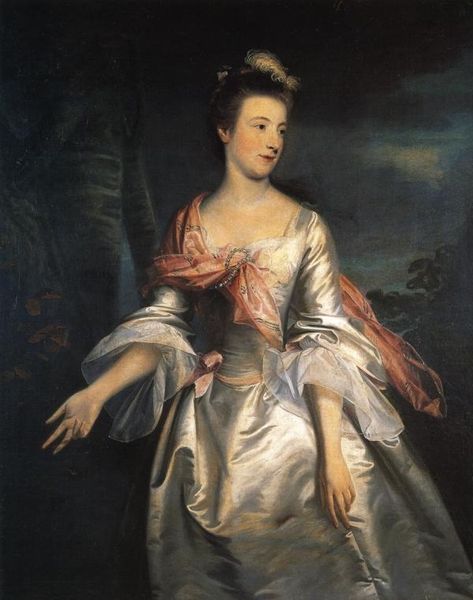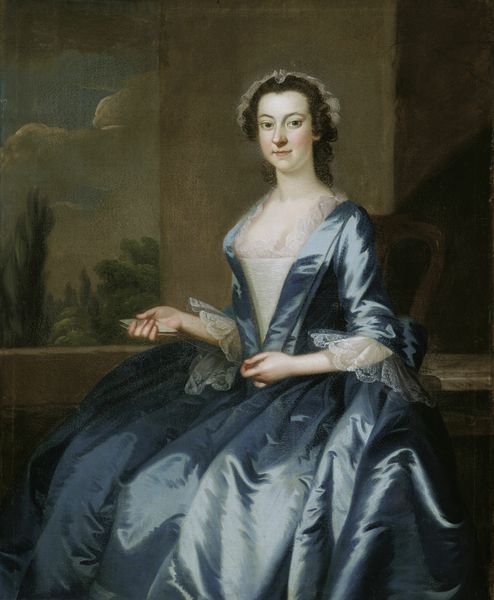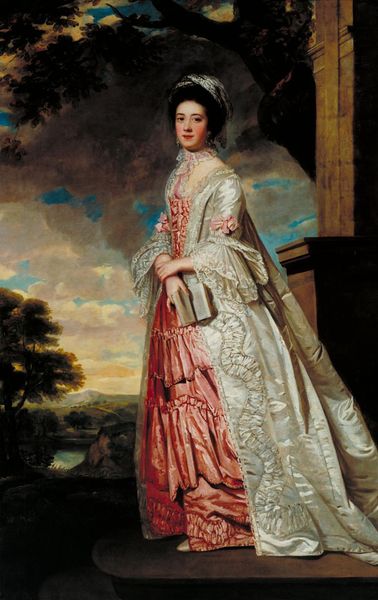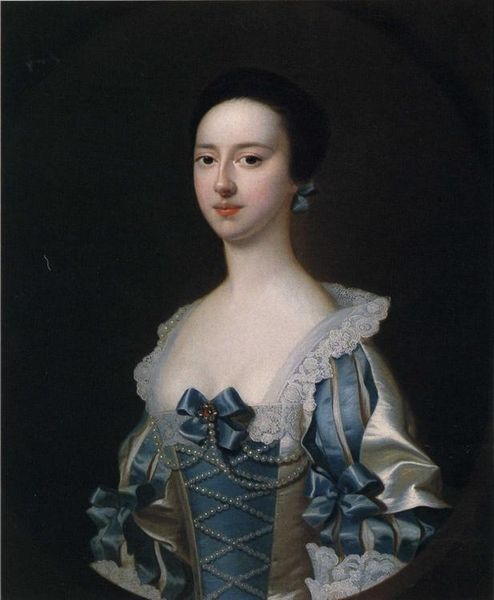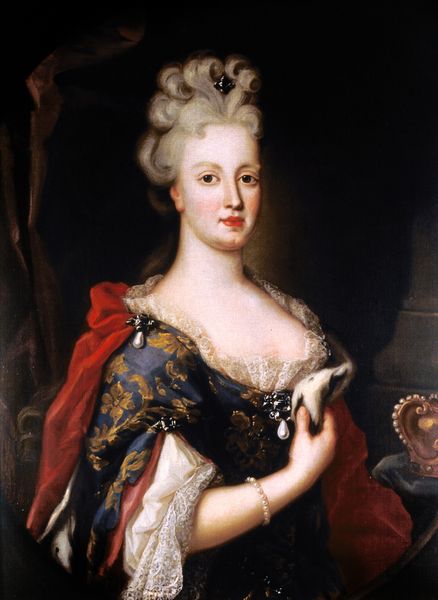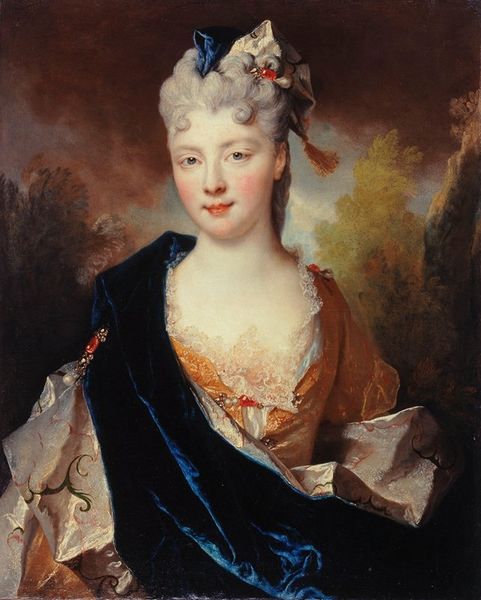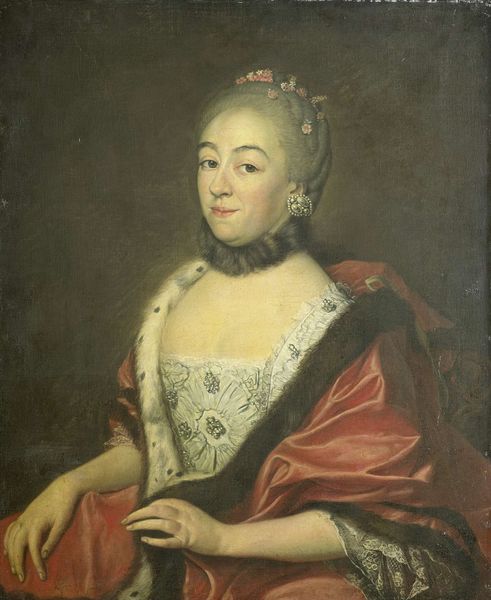
painting, oil-paint
#
portrait
#
painting
#
oil-paint
#
rococo
Copyright: Public domain
Editor: We're looking at Antoine Pesne’s 1744 portrait of "Luise Ulrike of Prussia, Queen of Sweden," done in oil. It has such a detached and theatrical feel to it. She’s holding a mask, almost as if she's not quite ready to fully reveal herself. What do you make of it? Curator: It’s compelling to consider this painting as a construction of identity. The Rococo style, with its emphasis on ornamentation and leisure, often served as a means for the aristocracy to project an image of power and refinement, especially at a time when such authority was starting to be questioned. Luise Ulrike's Prussian origins and marriage into the Swedish monarchy placed her at a complex intersection. Editor: Intersection in what sense? Curator: Well, as a woman in power, her role was both performative and political. How much control did she really have versus what was dictated by courtly expectations? The mask could be interpreted not just as theatrical, but as a commentary on the limited agency afforded to women in positions of power during this period. What does that mask symbolize, beyond a simple accessory? Is it hiding or revealing something? Editor: It makes me think about what she might be concealing about her political influence. The jewels and lace signal wealth, but maybe the mask implies there's more to her than just a pretty face and queenly status. Curator: Precisely! The artist invites us to consider the interplay between public image and private self, and the ways in which gender, class, and nationality contribute to the formation of identity. I wonder if that’s an expression of quiet resistance, or strategic compliance? Editor: It’s definitely more layered than I initially thought, the image of a queen painted with oil becomes one of constructed femininity and negotiated power. Thanks!
Comments
No comments
Be the first to comment and join the conversation on the ultimate creative platform.
